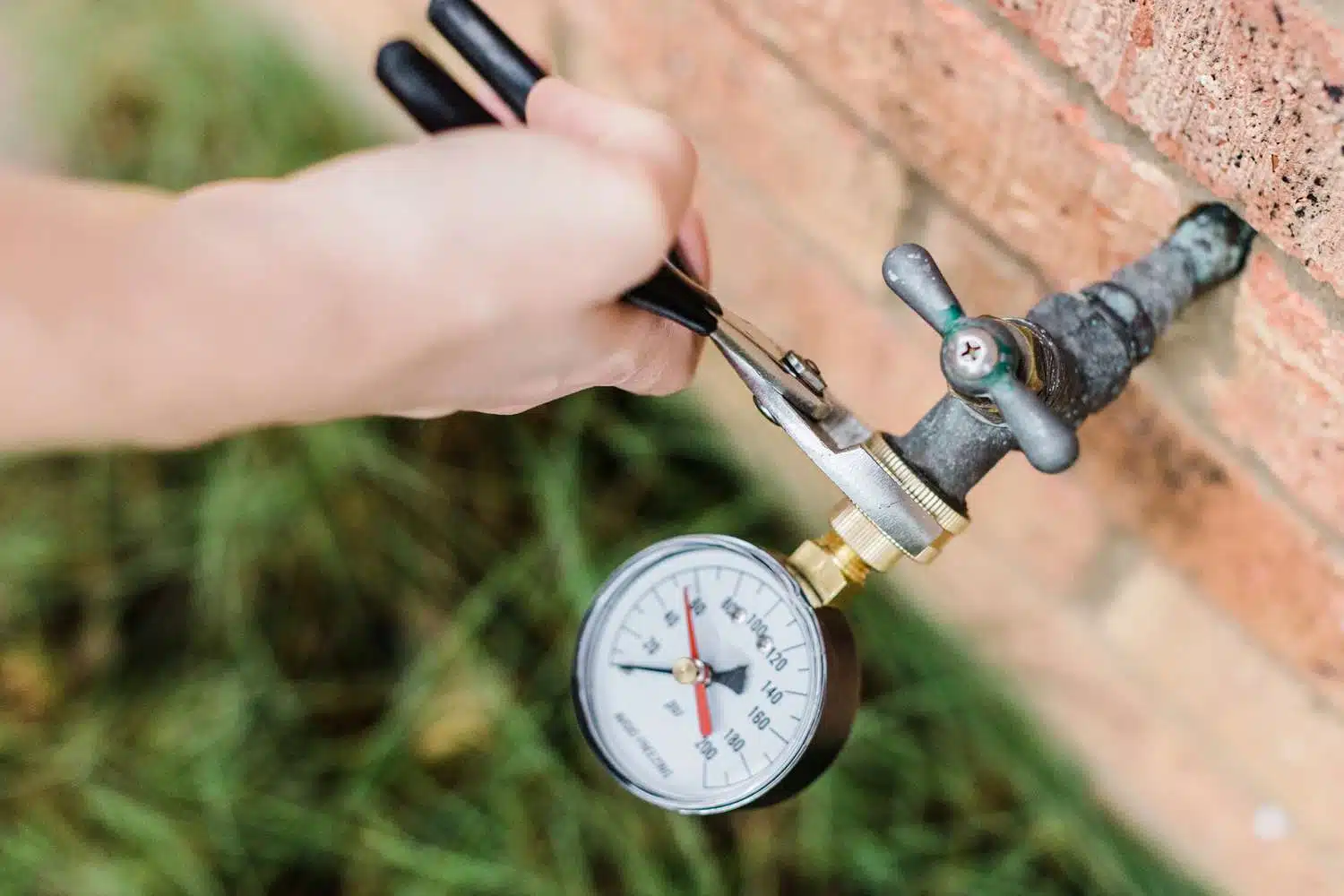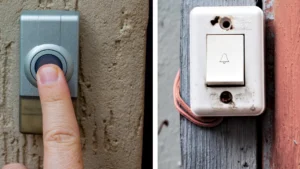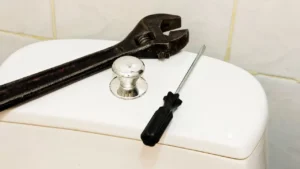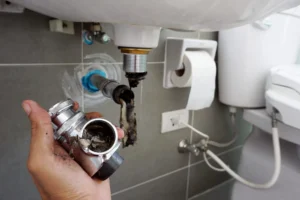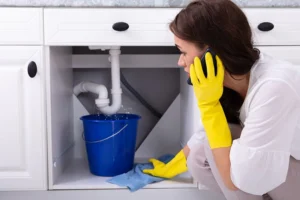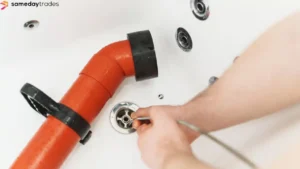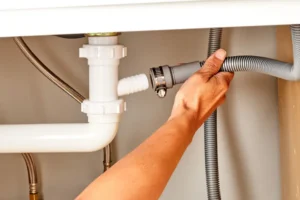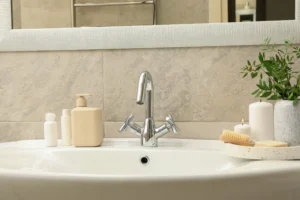Experiencing issues with your taps or showers not working as they should? It might be due to your home’s water pressure. Did you know there’s an ideal range for this? This blog will guide you through understanding and adjusting your water pressure, making sure it’s just right.
Keep reading to learn more!
Understanding Water Pressure
Water pressure is all about how strongly water moves through your pipes. It’s a bit like the force that pushes water out of your hose when you’re watering the garden.
Definition and formula
Water pressure is simply how strong water moves through pipes. The strength of this flow is measured in pounds per square inch (PSI) or kilopascals (kPa). Normal household water pressure ranges between 40-60 PSI or about 280 to 410 kPa.
Higher numbers mean stronger water flow.
The right balance in your home’s water pressure ensures efficiency and comfort.
Different types, like fluid pressure, deal with how liquids push on things they touch. Explosion and negative pressures are more extreme examples that usually don’t apply to household water systems but show the varied ways pressure can act.
What affects your taps at home comes down to many factors – how high your water tank is, if any pipes are clogged, or the setting on your regulator can all play a part.
Types of pressure (fluid, explosion, negative, etc.)
Now that we understand the basics of pressure and its formula, let’s explore the different types of pressure. Each type affects water flow in its own way.
Fluid Pressure: This is the pressure felt at any point in a fluid, like water. It’s why showers and taps work. The average house water pressure (kpa) is a good example of fluid pressure at work.
Explosion Pressure: Not common in homes, but it’s good to know about. It happens when there is a sudden release of energy, causing a rapid increase in pressure. Think of a balloon popping.
Negative Pressure: Also called vacuum pressure, this occurs when the pressure in an area drops below atmospheric pressure. In homes, it can make doors slam or cause problems with ventilation.
Atmospheric Pressure: This isn’t about water, but it influences everything. It’s the weight of air above us and changes with weather conditions.
Static Pressure: This measures the force exerted by still water in pipes. When you turn off your taps, static pressure builds up.
Each type plays a role in how water moves around our homes. From making sure showers are refreshing to keeping our pipes safe, understanding these pressures helps us manage water use better.
Factors that affect water pressure
Water pressure in your home can change for many reasons. Knowing what influences water pressure helps you fix issues faster. Here’s a look at some main factors:
– Peak Usage Times – During morning and evening, when everyone is using water, pressure might drop.
– Home’s Elevation – Higher homes get lower pressure because it’s harder for water to go up.
– Distance from Water Source – The farther your home from the source, like a reservoir, the weaker the pressure might be.
– Water Demand in Your Area – More homes and businesses using water can reduce the pressure.
– Condition of Pipes – Old or rusty pipes narrow down, slowing water flow and dropping pressure.
– Clogs and Leaks – Blockages stop water flow. Leaks mean less water gets to your taps.
– Valve Settings – Incorrectly set valves in your home can restrict how much water comes through.
– Size of Pipes – Small pipes can’t carry much water, leading to lower pressure.
– Local Supply Issues – Work on mains or problems at the source can temporarily affect your home’s pressure.
Each factor plays a part in how strongly water flows from your taps. Some issues are quick fixes, while others might need a professional’s help.
Ideal Water Pressure for Home
For your home, the right water pressure is key. It makes sure taps and showers work well, without trouble.
Recommended pressure range
The ideal pressure for your home should be between 40 and 75 pounds per square inch (psi) or about 280 to 520 kilopascals (kpa). This range helps make sure water flows smoothly from taps, showers, and appliances.
If the pressure goes above or dips below these numbers, you might start seeing problems. It’s like having a sweet spot; too much or too little can mess things up.
Finding the right balance in water pressure is key to a happy home.
Measuring your home’s water pressure can be done with a gauge that screws onto a tap outside. This simple tool shows if your pressure fits within the average house water pressure kpa range.
Keeping an eye on this helps avoid surprises and keeps everything running just right.
How to measure water pressure at home
Now that you know the recommended pressure range for your home, it’s time to find out how to check the mains water pressure psi. Measuring water pressure at home is quite simple. All you need are a few tools and a bit of know-how. Here’s a step-by-step guide:
-Get a water pressure gauge. You can buy one from most hardware stores.
-Find the nearest tap to your water meter or where the main service line enters your house. This spot usually gives you the most accurate reading.
-Make sure no water is being used inside or outside your home. Turn off all taps and appliances that use water.
-Attach the gauge to the tap. Screw it on tightly to prevent any leaks.
-Turn on the tap fully so that water pushes against the gauge for a reading.
-Look at the gauge’s dial to see your home’s water pressure in psi (pounds per square inch).
-Write down this number so you can refer back to it.
Using these steps helps you understand if your home’s water pressure fits within the ideal range or if you need to take action to adjust it, ensuring everything in your household runs smoothly and efficiently.
Causes of low or high water pressure
After learning how to check your water pressure, you might wonder why it’s too low or too high. Well, several reasons can cause this, and knowing them helps in finding the right fix.
## Low Water Pressure Causes
-Clogged Pipes: Over time, pipes can get clogged with dirt and minerals, slowing down water flow.
-Leaks: Small leaks in your plumbing can reduce water pressure as water escapes before reaching its destination.
-Corroded Plumbing: Old metal pipes can corrode inside, narrowing the path for water and reducing pressure.
-Supply Issues: Sometimes the problem is not in your home but with your local water supply experiencing issues or lower pressure.
-Faulty Fixtures: Taps and showerheads can get blocked with scale or debris, leading to poor water flow.
## High Water Pressure Causes
-Regulator Failure: Homes often have a pressure regulator to keep the pressure at a safe level. If this fails, pressure can spike.
-High Supplier Pressure: Your water supplier might deliver water at high pressures that are too much for your home’s plumbing system to handle.
-Thermal Expansion: When water heats up in your boiler or hot water system, it expands, causing increased pressure if there’s nowhere for the extra volume to go.
-Pipe Design Errors: Sometimes pipes are not laid out or sized correctly for the home’s needs, leading to unexpected changes in water pressure.
Knowing these causes is step one towards fixing your home’s water woes!
Impact of Water Pressure on Your Home
The right water pressure keeps your showers brisk and your taps full – too much or too little can really stir things up in the household. Keen to keep your pipes happy? Keep reading to discover how.
Effects of low water pressure
Low water pressure makes daily tasks hard. Showers become less enjoyable, and filling the kettle takes ages. Washing dishes or clothes can feel like it’s taking forever. It’s not just about convenience; appliances like dishwashers and washing machines may not run as efficiently.
This could lead to longer cycles and higher energy use.
Dealing with low water pressure means more than slow showers; it affects your entire home’s efficiency.
Gardens also suffer when hoses dribble instead of spray, making watering plants a long chore. In simple terms, low water pressure disrupts the smooth running of a household, stretching out chores that should be quick and easy.
Effects of high water pressure
Moving from the struggle with low water pressure, high water pressure brings its own set of challenges. Homes often face issues due to too much pressure in their pipes. This can lead to leaks or even bursts in your plumbing system.
It’s like forcing too much air into a balloon – eventually, it pops.
High water pressure also wears down appliances faster than usual. Think about your washing machine, dishwasher, and hot water heater working overtime all because the water hits them too hard.
Over time, this extra force means you may have to fix or replace these items sooner than expected. Plus, it boosts your water bill as more water rushes through taps and showers quicker than needed.
Solutions for Improving Water Pressure
To fix water pressure problems, you might need to tweak your pressure regulator, clean pipes, get a booster pump, talk to your water supplier or call a plumber. Keen to learn more? Keep reading!
Adjusting the pressure regulator
Adjusting the pressure regulator can fix water pressure issues at home. This device controls how much water comes in from your main water line. If your water flows too fast or slow, a simple tweak might be all you need.
Find the regulator near where the main water line enters your house. Use a wrench to adjust it—turn clockwise to increase pressure or anti-clockwise to decrease it. Always check the pressure with a gauge after adjusting to make sure it’s just right.
Keep an eye on changes in your home’s water flow after this adjustment. Sometimes, setting it too high or low can cause new problems. Aim for that sweet spot in pressure that keeps showers strong and pipes safe.
If unsure about making adjustments yourself, calling a plumber is a good idea. They know exactly how to manage these settings for optimal performance without risking damage.
Clearing clogged pipes
After adjusting the pressure regulator, another key step is clearing clogged pipes. Clogged pipes can really slow down your water flow. They make it hard for water to move smoothly through your home’s plumbing.
This might cause low pressure at taps and showers. To fix this, you need to clean out the stuff blocking these pipes. You can do this by using a plunger or a plumber’s snake. Sometimes, chemical cleaners help too but use them carefully as they can harm your pipes.
For tougher clogs, you might want to call in a professional plumber. They have special tools and know-how to clear things up without damaging your pipes. Getting rid of blockages not only improves water flow but also keeps your plumbing healthy in the long run.
So, keeping those pipes clear is important for maintaining good water pressure at home.
Installing a water pressure booster pump
Installing a water pressure booster pump can solve low water pressure problems in your home. This device takes the existing water flow and increases its pressure, giving you stronger showers and faster-filling sinks.
You simply get it hooked up to your main water line. A professional usually does this job to make sure everything works right.
Once set up, the booster pump uses electricity to add extra force to the water moving through your pipes. It’s like giving your home’s water supply a helpful push so that whenever you turn on a tap or shower, the flow is much better.
Keep in mind; it’s always smart to check with an expert about the best type of pump for your house needs, ensuring it matches well with your system.
Contacting your water supplier
If you’re dealing with issues in your water pressure, it’s a smart move to get on the phone with your water supplier. They can tell you if there are any bigger problems in your area that might be messing with your pressure.
Your supplier has teams who check these things and they can often give you an update or fix the problem from their end.
Sometimes, the trouble isn’t widespread but just at your home. Your supplier can offer advice over the call or send someone out to take a look. This means they’ll help figure out why your pressure is off and what can be done about it.
It’s good to know that this kind of help is usually free, so don’t hold back from calling them up.
Professional plumbing services
Professional plumbing services can be a lifesaver for homes with water pressure problems. A skilled plumber has the tools and knowledge to find out why your water is too low or high.
They can fix pipes, adjust the pressure regulator, or set up a booster pump. This help makes sure your taps and showers work right and keeps your home safe from damage caused by wrong pressure.
Plumbers also give advice on keeping good water pressure. They tell you when to check your system and how to stop problems before they start. With their help, you can enjoy steady water flow every day.
Next up, let’s look at more ways to keep your house in top shape.
Conclusion
Finding the right water pressure for your home makes a big difference. Aim for a pressure that’s between 40 and 60 psi. This range keeps things working well and safe. If you notice the pressure is too low or too high, take action quickly.
You have many options to fix it, from adjusting regulators to getting professional help. Keeping an eye on your water pressure means fewer problems and happier living at home.

